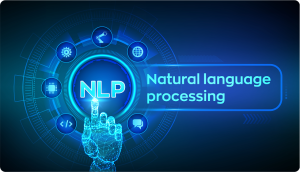
Introduction
In today’s busy mortgage market, checking risk properly is the key to making good lending decisions. But this depends on how complete and correct the borrower’s documents are.
Every loan application comes with a big stack of paperwork, tax returns, pay slips, job letters, property reports, title papers, credit history, and more. Checking all this by hand takes a lot of time and can lead to mistakes. Small errors or missing details can cause lenders to approve risky loans, face fines, or deal with legal problems later.
This is where AI comes in. With AI, document checks happen automatically. It works faster, finds errors people might miss, and makes sure every file is complete. This helps lenders make quicker, smarter, and safer loan decisions while staying fully compliant.
Why Document Accuracy Is Essential for Risk Assessment
Improved Credit Decisioning
Every smart credit decision starts with trusted numbers, income, employment, and asset data must be verified at the source.
For example, a borrower’s debt-to-income (DTI) ratio is one of the key risk factors. If tax returns or pay stubs are misread or misfiled, the DTI calculation can be off, approving loans for people who can’t actually afford them.
AI ensures all critical data points are captured and cross-checked. It can read tax forms, verify pay stubs against declared income, match bank statements to asset claims, and flag anything that doesn’t add up.
When your data is clean, your risk models perform better. The result? Fewer bad loans and more trustworthy approvals.
Detection of Fraud or Inconsistencies
Fraudsters can get creative, reusing the same pay stub across multiple loans, inflating income, or forging appraisal reports.
Manual reviewers may catch obvious fraud, but subtle manipulations often slip through, especially when loan volumes spike.
AI-powered systems are trained to detect unusual patterns. For instance:
- Does an employment letter match pay stubs and tax returns?
- Are there signs of digital tampering?
- Do bank statements show sudden unexplained deposits?
Machine learning models flag these mismatches in real-time, preventing risky loans from slipping through.
Audit-Ready, Compliant Loan Packages
Mortgage lenders face constant scrutiny from regulators and investors. Every loan file must be complete, accurate, and compliant with state, federal, and investor rules.
AI doesn’t just check documents; it makes sure they’re complete, in the right format, and audit-ready.
Missing an appraisal addendum or an outdated title report? AI spots it instantly. It also keeps an audit trail, showing exactly when a document was received, checked, and verified.
When regulators or investors come knocking, these digital logs prove you did your due diligence.
Incomplete or unverifiable loan files are a common reason for investors to demand buybacks, which cost lenders millions every year.

Challenges in Traditional Document Checks for Risk Evaluation
Even with experienced underwriters and risk teams, traditional manual checks have clear limitations:
Data Comes from Too Many Places
One mortgage file can include documents from different sources, employers, tax offices, appraisers, and credit bureaus. Each document can look different and come in a different format.
Putting all this information together by hand is like trying to solve a puzzle with missing pieces. It’s easy to miss mistakes, like income numbers that don’t match between a pay stub and a bank statement.
How AI helps: AI turns all these different documents into clean, structured data. It checks for mismatches automatically and shows underwriters any hidden problems
Manual Checks Miss Small but Important Details
Humans can only check so much at once, especially when loan volumes are high. Small differences or mistakes can slip through.
For example, matching declared income with tax returns, checking if the debt-to-income ratio is right, or spotting when a home’s value looks slightly too high, these take time and careful checking.
How AI helps: AI does this cross-checking automatically, comparing thousands of details quickly. It finds mistakes people might miss and makes sure all risk factors are verified.
Too Many Applications Overwhelm Manual Teams
Applications don’t come in at the same speed every month. When rates drop or markets are busy, hundreds or thousands of loans can land at once.
Manual teams can’t always keep up. To handle the rush, they may rush checks, skip steps, or build up big backlogs. This increases the risk of missing something important.
How AI helps: AI can handle any number of applications at once, whether it’s 50 or 5,000. It checks every document with the same care and speed.
Inconsistent Risk Policy Application Across Teams
Even when a lender has clear risk rules, different teams or offices might follow them in different ways. One person might flag an issue, another might miss it. This causes confusion and inconsistent decisions, which can lead to compliance problems.
How AI helps: AI follows the same rules every single time. It makes sure risk checks are done the same way across all branches and teams, with a clear record to prove it.
What Happens When Document Risk Checks Are Weak
If document checks are not done properly, lenders can face serious problems, and it usually costs them money and trust.
Wrong Loans Get Approved
If income or asset details are not verified properly, lenders might give loans to people who can’t actually afford to repay. This means a higher chance of missed payments and defaults.
How AI helps: AI makes sure that only complete, correct data goes into credit checks, so risky loans are spotted early.
Investors May Reject the Loan
Big investors or government agencies often review loan files before buying them. If they find missing or unverified documents, they can force the lender to buy the loan back. This is expensive and damages trust.
How AI helps: AI double-checks every field and document before the loan is packaged and sent to investors, cutting down the risk of costly buybacks.
Legal and Recovery Challenges
If a borrower stops paying and the lender tries to recover the money, missing or faulty paperwork, like a bad title deed or missing insurance, can slow things down or even lead to court cases.
How AI helps: AI makes sure all-important documents are complete and correct before the loan closes, avoiding surprises later.
Compliance Violations
Regulators expect every file to be complete and audit-ready. If paperwork is missing or wrong, lenders can face fines, penalties, or failed audits.
How AI helps: AI creates a clear digital trail of every check done, with time stamps and version history, so lenders always have proof for audits.

How AI-Based Document Verification Works for Risk Analysis
AI for mortgage risk checks isn’t a black box, it’s a smart system combining several capabilities.
Automated Field-Level Extraction & Validation
AI can “read” tax forms like 1040s, W-2s, pay stubs, appraisal reports, title certificates, and more.
It extracts:
- Income data
- Employment details
- Property valuations
- Borrower identities
Then it cross-checks this data against third-party databases or other documents to ensure consistency.
Anomaly Detection and Cross-Matching
Machine learning algorithms detect:
- Values that don’t match across forms
- Signs of forgery or tampering
- Mismatched names or SSNs
- Missing required fields
These flags help risk teams focus only on files that truly need manual escalation.
Pre-Built Models for Appraisal and Title Validation
Many leading AI solutions come with specialized modules for property data.
They can read complex appraisal reports, check for valuation errors, parse title summaries, and verify flood certifications.
This cuts down on manual review time and reduces errors in high-risk areas.
Audit Trail Generation
AI systems keep a detailed record of every action:
- When a document was received
- When and how it was validated
- Any changes or flags raised
This makes regulatory or investor audits smoother and faster, with digital evidence to back you up.
Compatibility with Core Systems
AI doesn’t work in isolation. It connects seamlessly with:
- Risk scoring engines
- Loan origination systems (LOS)
- Servicing platforms
So verified data flows straight into your risk workflows, with no extra manual steps.
Conclusion
In mortgage lending, accurate documents = accurate risk analysis. It’s that simple.
Manual document checks take a lot of time, often lead to mistakes, and are hard to manage when loan volumes grow. If important issues are missed, it can result in wrong loan approvals, expensive loan buybacks, and problems with compliance.
AI makes this process faster and more reliable. It carefully checks every detail, like income, job information, assets, and property value, and sends clean, verified data into your risk systems. As the mortgage industry becomes more competitive and strictly regulated, using AI for document checks is no longer optional; it’s necessary.
Lenders who start using this technology now will be better prepared for future challenges, and they’ll be able to make faster, safer, and smarter loan decisions every day.
Ready to simplify your mortgage document checks with AI?
Reach us today to see how smarter validation leads to safer lending.










